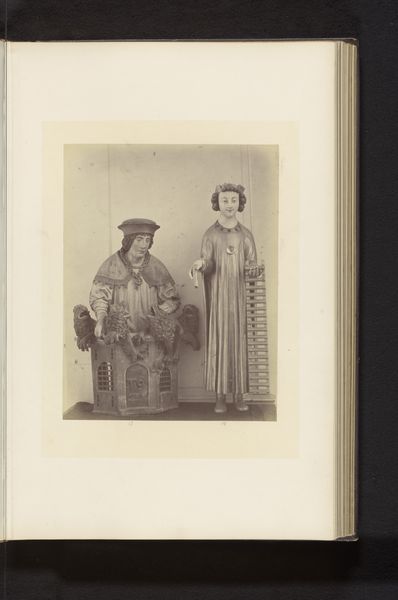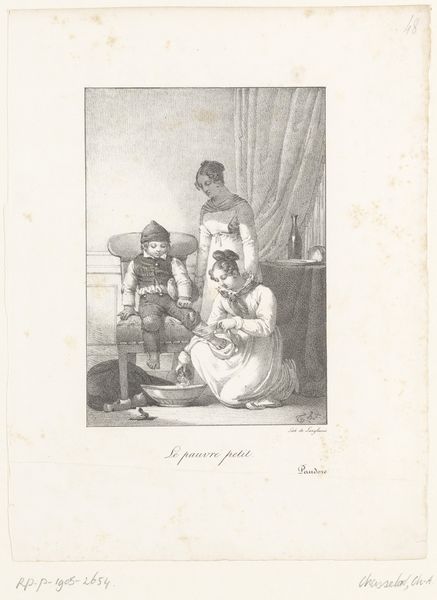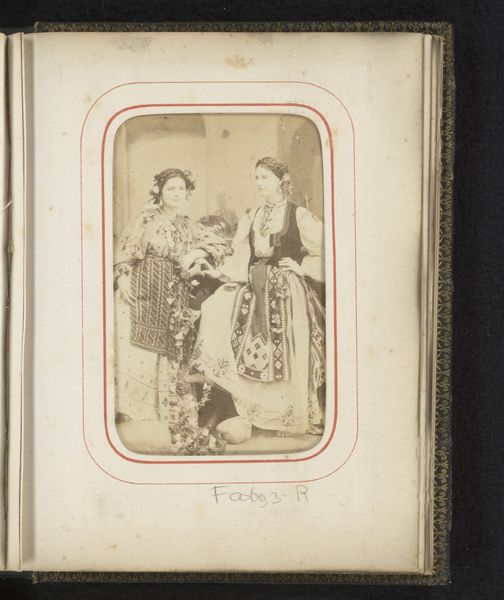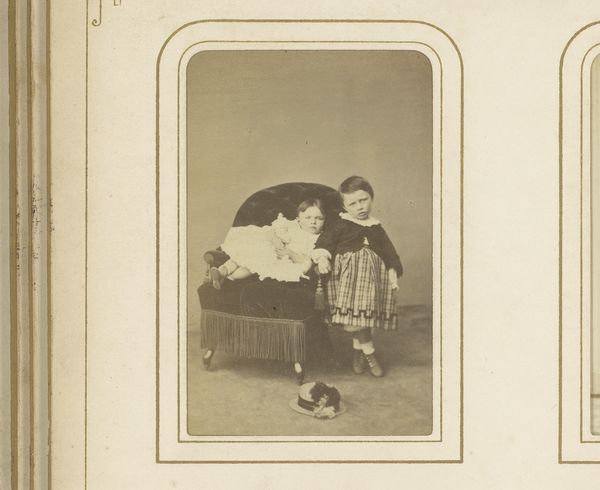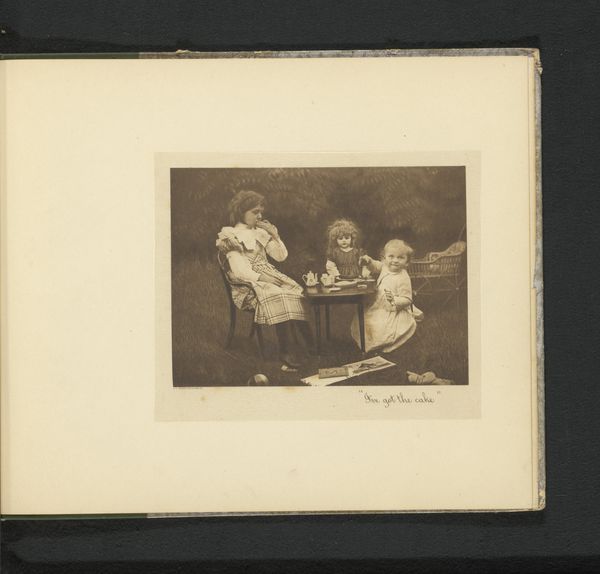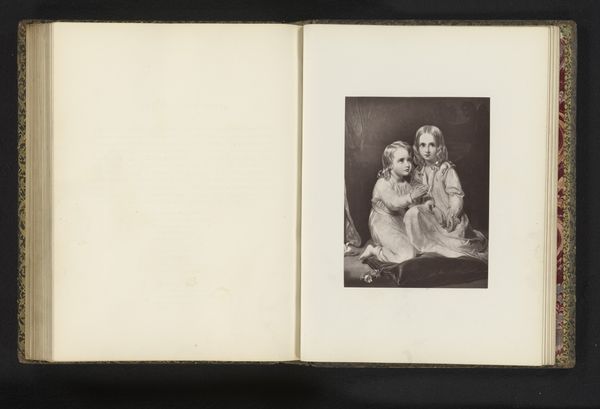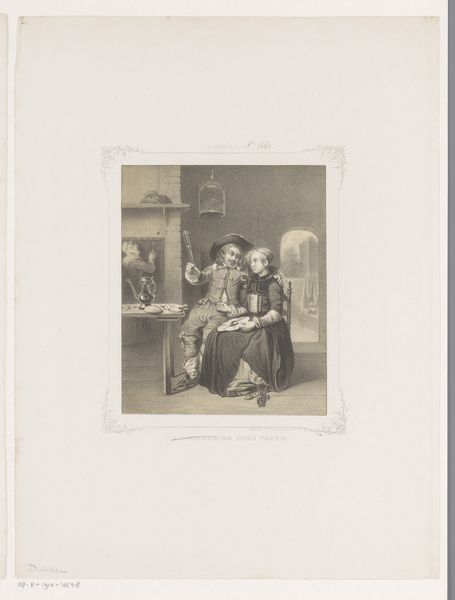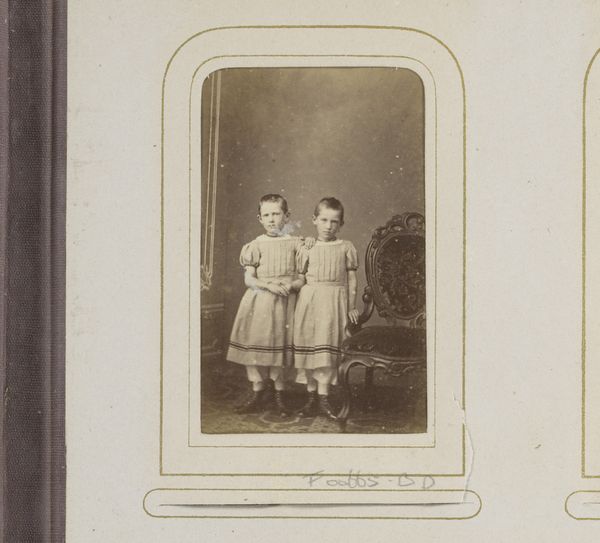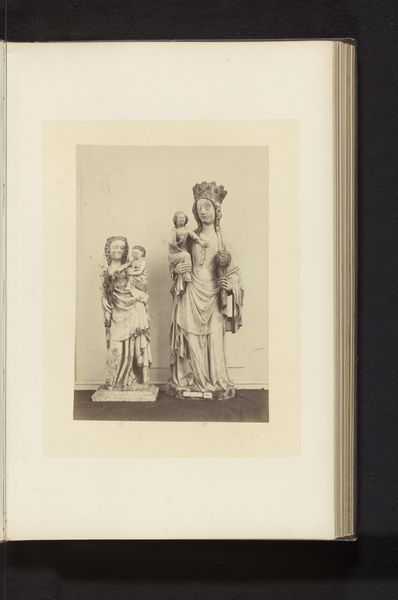
Sculptuur van Daniël in het leeuwenhol en een sculptuur van de heilige Alexius, van gekleurd eikenhout, opgesteld op een tentoonstelling over religieuze objecten uit de middeleeuwen en renaissance in 1864 in Mechelen before 1866
0:00
0:00
photography, sculpture, wood
#
portrait
#
medieval
#
figuration
#
11_renaissance
#
photography
#
sculpture
#
wood
Dimensions: height 257 mm, width 196 mm
Copyright: Rijks Museum: Open Domain
Editor: This photograph, taken before 1866 by Joseph Maes, depicts two painted wooden sculptures. They were part of a religious objects exhibition in 1864. The sculpture of Daniel in the lion's den, on the left, is quite striking. What historical narratives are embedded in these sculptures? Curator: Considering these sculptures were showcased in 1864 during a revival of interest in medieval art, we need to analyze the social context of the time. Religious objects served not only devotional but also political and social functions. The representation of Daniel, for instance, isn't just a biblical scene; it’s about righteousness and divine protection in the face of persecution. How might the audience of 1864 have interpreted this? Editor: So, Daniel as a symbol of resilience against oppression... I hadn't thought about it that way. And the Saint Alexius figure? Does he carry similar weight? Curator: Absolutely. Saint Alexius renounced his wealth and privilege for a life of poverty. Reflect on what this tells us about the values being upheld, or perhaps critiqued, in the mid-19th century. Were they promoting a rejection of material wealth at a time of growing industrial capitalism? Editor: It's fascinating to see how these medieval figures are not just historical relics but are actively engaging with 19th-century concerns around religion, class, and power. Curator: Exactly. They're tools used to negotiate contemporary issues. The choice of representing them in colored wood—how does that material speak to notions of authenticity and the "primitive" at that time? Editor: I see. This connects to a larger narrative about the role of religious belief within shifting political landscapes of the 19th century. Thanks! Curator: My pleasure!
Comments
No comments
Be the first to comment and join the conversation on the ultimate creative platform.
